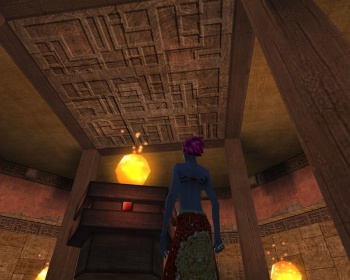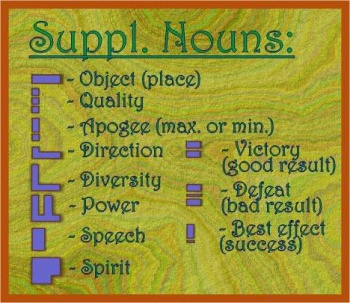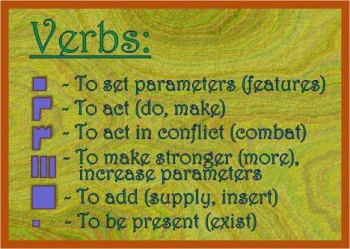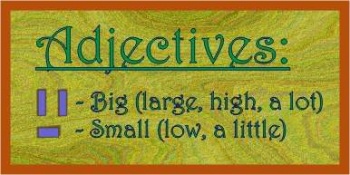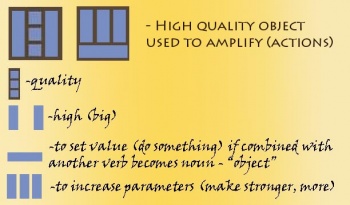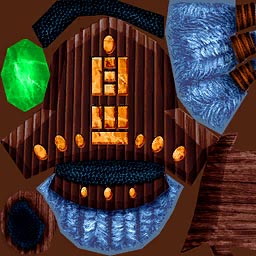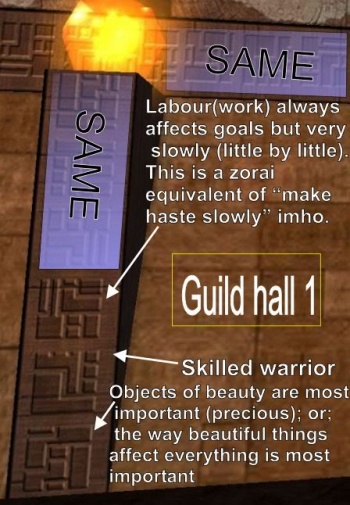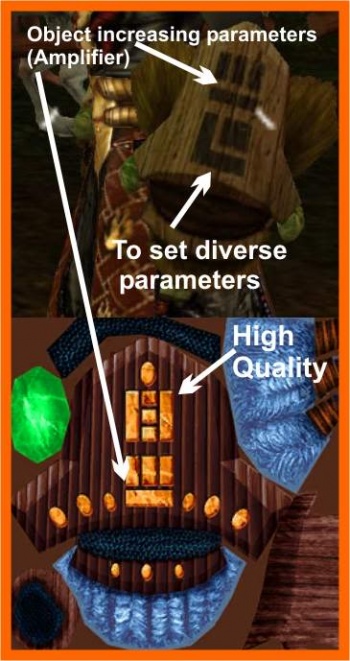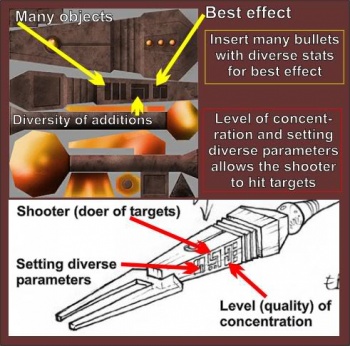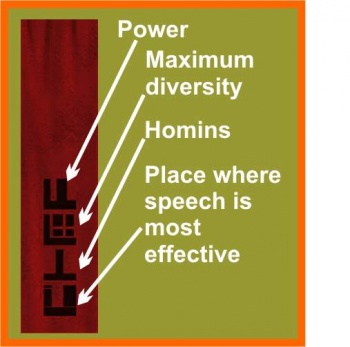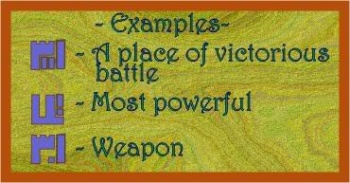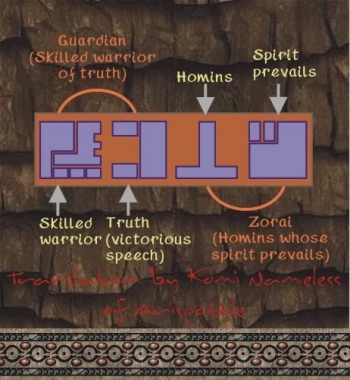Aus EnzyklopAtys
Leda (Diskussion | Beiträge) (Die Seite wurde neu angelegt: „{{TIP}} <noinclude>{{Trad|DE=Zoraï-Piktogramme|EN=Zoraï pictograms|palette=zorai|H=1}}</noinclude> Image:z_picto1.jpg|thumb|350px|Example of Zorai pictogr…“) |
(kein Unterschied)
|
Aktuelle Version vom 4. April 2024, 18:54 Uhr
| |
- See also: Zoraï (main article)
The pictographic writing of the zorai can not be viewed as simply a means of recording events or various bits of data. Unlike other nations, the Zorai treat their written word with an awe and admiration. The pictographic writing of the zorai is quite impersonal: it does not include any pronouns, neither does it have any refernces to time of day or the season of the year. Usually the sacred truths - the mantras are comitted to writing and often repeated over and over again on buidings and weaponry, however in some cases the inscriptions on the usable objects (weapons) are in fact instructions on how to use these objects to best effect.
Because of that the zorai pictograms have often been considered pure ornamentaion by other races, which of course they are not. Neither do they represent an alphabet, where 1 symbol would stand for 1 letter. The pictograms are carefully crafted sets of meanings put together to represent a bigger and more complex whole. Most of the elements used in the pictograms have a meaning of their own and combined in a specific way they produce a meaning of greater magnitude, reaching an effect of synergy.
The study of Zorai pictograms helps scholars better understand the philosophy and mentality of this mysterious people. The most extensive study in this field has been carried out by a matisian scholar Komi the Nameless.
Inhaltsverzeichnis
General rules
- 1 - Every element is valuable. Every element is unique. Therefore it is allowed to rotate every element in any desired way including a horizontal or vertical flip (mirror reflection), the elements can even be somewhat distorted to allow a better fit into the pictogram. The zorai mind can grasp the meaning of every element without the unnecessary limits of "proper" positionioning.
- 2 - The complete sets of pictograms representing a phrase should not be read in a specific way (e.g. from left to right or from top to bottom). Only in grasping the variety of elements and pictograms presented by author as a whole, in a synthesis, can an understanding be reached.
- 3 - The zorai pictographic writing is verb driven. Individual symbols are either verbs, adjectives, supplementary nouns (like “quality” and “direction”) or prepositions. You get more complex nouns by combining two similar verbs (or adding adjectives on top of that). In my opinion this is dictated by zorai philosophy: actions and qualities occur spontaneously throughout the universe but actors and objects can only appear as a result of complex processes. Therefore they have a more complicated build and require special attention.
- 4 - The pictogram should always be read starting with a verb (if there is a verb in it).
- 5 - The adjective (or supplementary noun) that is encircled by the verb, or stands next to the verb and has exactly the same length, refers to this verb and nothing else.
Examples of meanings
Interestingly enough, unlike zorai speech the pictograms have no references to time - future past or present, today or tomorrow. One way to look at it would be that the written word transcends time and therefore no tracking oа days or years is required.
Explained translations of most common pictograms
The above example of the pictograms enscribed on the sword is a typical zorai mantra. Repeated over and over again it can be comprehended as "Even for a skilled warrior objects of beauty (and the way they affect everything) are most important. A skilled warrior should work very slowly but steadily and then he will surely reach all the goals." Basicly this line states: even though you are a skilled warrior remember that first and foremost you are a zorai, don't act on impulse, appreciate beauty!
The writing on the amplifier is a description of the object itself, which unlike the sword shos that the amplifiers are just a magnifying glass for the bearers innate abilities they have no attributes of their own and therefore deserve no mantra insription. Another way to understand this would be - It's the one who acts who is responsible for his actions, and not the means through which the action is executed.
Other pictogram translations
| Guild hall wall decoration | Guild hall - ceiling decoration | Magic amplifiers (medium and high quality) |
The Guild hall mantras mirror those on the zorai sword which means that these particular mantras have a most important educational aspect. It is interesting to note that although nature-loving and meditative the zorai still consider themselves a warrior culture. hence the pictogram that refers to "honor" - "Fight with suh quality that you know little defeat (Only the high quality of fighting brings victory). This latter is an interesting aspect since basically it can be understood as: "Strength is in quality of individual fighters and not in numbers".
| Zorai rifle | Flags at building entrance | Flags at the central square |
The writing on the zorai rifle is another plain instruction. It explains that concentration is important when firing, and that the shooter should select his ammunition with care using it's diverse parameters. Same as with amplifiers this stresses the importace of shooters concentration and carefully selected ammunition rather than the rifle itself.
The flags are a different matter. Since they are placed all over the citis and the writing on them is repeated, while describing the location itself: city (a place of most divrsity with many homins) they also carry a mantra: Despite the diversity in the place where many homins gather, spirit (or rather spirituality) should always prevail. In other words don't let your mind be distracted by the mundane in the busy crowds of the city, remember that you are a zorai!.
The flag on the central square - a place of most important declamations and social gatherings has a similar inscription: This is the central place of the city, a place of power because it is here that true speech is most effective. As suggested by Komi the Nameless in his research on zorai pictograms this is an example of a difference between the "words" used in everyday life, and the "true speech" - words of wisdom, bearing power, vocalised mantras that influence the fate of the zorai nation.
Examples of other pictograms
These are some of the zorai pictograms used by the players. The lefthand image shows various pictograms found by Komi the nameless within the ancient zorai scrolls (game sketches). The image in the middle has first appered in the Kitin Scriptures by the same author. The image on the right is the pictographic name of a zorai guild from Leanon.
For more info on zorai pictograms, a guild inscription of your own or other related matters please contact Komi the Nameless


